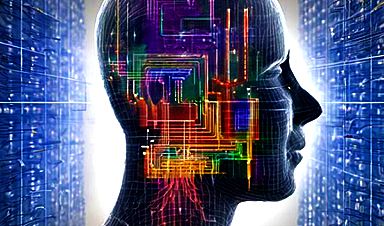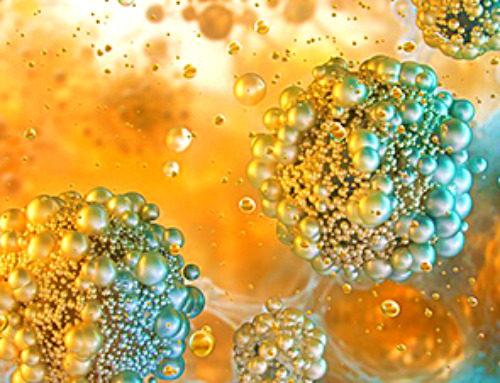KEY POINTS
- Neuralink’s demo introduces “cognitive compartmentalization,” enabling simultaneous cognitive tasks.
- This signifies a potential expansion in human cognitive abilities, enhancing multitasking and creativity.
- Raises concerns about cognitive overload and the merging of physical and digital realities.
- Promises transformative implications for medical treatments and redefines human-machine interaction.
A Multiverse of Thought
Cognitive compartmentalization, as showcased by Arbaugh, is not merely a technological event; it represents a curious evolution of human cognition. It involves the ability to segregate and manage multiple conscious cognitive processes simultaneously, such as articulating thoughts while independently controlling a digital interface through mental commands. And while the multi-tasking of human thought and activity is commonplace, this new capability may suggest a remarkable expansion in our cognitive capacities, potentially heralding a new forefront in human-computer symbiosis and a technological push on the complexity of human capabilities.
But let’s take a cognitive step back. Compartmentalization, in psychological terms, refers to a defense mechanism where individuals mentally separate conflicting thoughts, emotions, or experiences to avoid cognitive dissonance and emotional discomfort. This process allows people to hold contradictory beliefs or emotions by isolating them into distinct compartments within their minds, preventing them from clashing and causing distress. It’s a subconscious effort to maintain mental integrity and emotional equilibrium in the face of conflicting internal or external demands.
On the other hand, the term “cognitive compartmentation,” as I’m presenting in the context of Neuralink’s groundbreaking demonstration, extends beyond this traditional defense mechanism to encompass a deliberate, conscious, and technologically augmented expansion of cognitive processes. This novel and speculative concept describes the ability to consciously manage and operate multiple streams of thought or tasks simultaneously, facilitated by advanced neural implants.
This distinction is pivotal. While traditional compartmentalization serves as a psychological coping strategy to manage internal conflicts and maintain emotional stability, cognitive compartmentation represents an technologically-mediated leap in cognitive capability. It suggests a potential reconfiguration of cognitive architecture, where the brain, augmented by technological interfaces, can engage with and process multiple streams of information simultaneously, akin to running several complex software applications on a computer without compromising the performance of each.
This expansion in cognitive capability through “cognitive compartmentation” challenges our current understanding of the human mind’s limitations and opens up new frontiers in exploring consciousness, multitasking, and the integration of artificial intelligence with human cognitive processes. It propels us into a future where the delineation between human cognition and machine intelligence becomes increasingly blurred, suggesting extraordinary advancements in how we interact with digital environments, solve complex problems, and experience the world around us.
This capacity could fundamentally alter our approach to multitasking, creativity, problem-solving, and even the essence of human experience. From a medical perspective, it offers a beacon of hope for individuals with motor neuron diseases, spinal cord injuries, and other conditions that impair physical capabilities. From a philosophical standpoint, it challenges our understanding of consciousness, free will, and the nature of human-machine interaction.
A Fractured Reality?
While the advent of cognitive compartmentalization may reflect a new perspective on human cognitive capability, it’s important to consider the potential ramifications of such expanded functionality. This proliferation of mental multitasking could usher us into a realm of fractured realities, where the seamless integration of digital interfaces and neural processes might stretch the fabric of our cognitive capacity into uncertain territory.
The human brain, while remarkably adaptable, operates within the confines of evolutionary parameters that have historically been bounded by the tangible world. The introduction of a layer where thoughts directly influence digital actions could lead to a dissonance between our physical reality and the digital realms we interact with. This disjunction might not only challenge our perception of reality but also strain our cognitive resources, leading to a potential overload or diffusion of focus.
Future Thought
From where I stand—as an observer, not a scientist—I see the potential emergence of a “cognitive multiverse” where neural implants and AI partner to expand thought into to a rich and more multifaceted experience. This expansion through cognitive compartmentalization represents a fascinating view into our understanding of human potential. Neuralink’s recent demonstration is not just a testament to technological advancement; it is a portal to a future where the limitations of human cognition may be completely redefined.
News
Fever-Proof Bird Flu Variant Could Fuel the Next Pandemic
Bird flu viruses present a significant risk to humans because they can continue replicating at temperatures higher than a typical fever. Fever is one of the body’s main tools for slowing or stopping viral [...]
What could the future of nanoscience look like?
Society has a lot to thank for nanoscience. From improved health monitoring to reducing the size of electronics, scientists’ ability to delve deeper and better understand chemistry at the nanoscale has opened up numerous [...]
Scientists Melt Cancer’s Hidden “Power Hubs” and Stop Tumor Growth
Researchers discovered that in a rare kidney cancer, RNA builds droplet-like hubs that act as growth control centers inside tumor cells. By engineering a molecular switch to dissolve these hubs, they were able to halt cancer [...]
Platelet-inspired nanoparticles could improve treatment of inflammatory diseases
Scientists have developed platelet-inspired nanoparticles that deliver anti-inflammatory drugs directly to brain-computer interface implants, doubling their effectiveness. Scientists have found a way to improve the performance of brain-computer interface (BCI) electrodes by delivering anti-inflammatory drugs directly [...]
After 150 years, a new chapter in cancer therapy is finally beginning
For decades, researchers have been looking for ways to destroy cancer cells in a targeted manner without further weakening the body. But for many patients whose immune system is severely impaired by chemotherapy or radiation, [...]
Older chemical libraries show promise for fighting resistant strains of COVID-19 virus
SARS‑CoV‑2, the virus that causes COVID-19, continues to mutate, with some newer strains becoming less responsive to current antiviral treatments like Paxlovid. Now, University of California San Diego scientists and an international team of [...]
Lower doses of immunotherapy for skin cancer give better results, study suggests
According to a new study, lower doses of approved immunotherapy for malignant melanoma can give better results against tumors, while reducing side effects. This is reported by researchers at Karolinska Institutet in the Journal of the National [...]
Researchers highlight five pathways through which microplastics can harm the brain
Microplastics could be fueling neurodegenerative diseases like Alzheimer's and Parkinson's, with a new study highlighting five ways microplastics can trigger inflammation and damage in the brain. More than 57 million people live with dementia, [...]
Tiny Metal Nanodots Obliterate Cancer Cells While Largely Sparing Healthy Tissue
Scientists have developed tiny metal-oxide particles that push cancer cells past their stress limits while sparing healthy tissue. An international team led by RMIT University has developed tiny particles called nanodots, crafted from a metallic compound, [...]
Gold Nanoclusters Could Supercharge Quantum Computers
Researchers found that gold “super atoms” can behave like the atoms in top-tier quantum systems—only far easier to scale. These tiny clusters can be customized at the molecular level, offering a powerful, tunable foundation [...]
A single shot of HPV vaccine may be enough to fight cervical cancer, study finds
WASHINGTON -- A single HPV vaccination appears just as effective as two doses at preventing the viral infection that causes cervical cancer, researchers reported Wednesday. HPV, or human papillomavirus, is very common and spread [...]
New technique overcomes technological barrier in 3D brain imaging
Scientists at the Swiss Light Source SLS have succeeded in mapping a piece of brain tissue in 3D at unprecedented resolution using X-rays, non-destructively. The breakthrough overcomes a long-standing technological barrier that had limited [...]
Scientists Uncover Hidden Blood Pattern in Long COVID
Researchers found persistent microclot and NET structures in Long COVID blood that may explain long-lasting symptoms. Researchers examining Long COVID have identified a structural connection between circulating microclots and neutrophil extracellular traps (NETs). The [...]
This Cellular Trick Helps Cancer Spread, but Could Also Stop It
Groups of normal cbiells can sense far into their surroundings, helping explain cancer cell migration. Understanding this ability could lead to new ways to limit tumor spread. The tale of the princess and the [...]
New mRNA therapy targets drug-resistant pneumonia
Bacteria that multiply on surfaces are a major headache in health care when they gain a foothold on, for example, implants or in catheters. Researchers at Chalmers University of Technology in Sweden have found [...]
Current Heart Health Guidelines Are Failing To Catch a Deadly Genetic Killer
New research reveals that standard screening misses most people with a common inherited cholesterol disorder. A Mayo Clinic study reports that current genetic screening guidelines overlook most people who have familial hypercholesterolemia, an inherited disorder that [...]





















